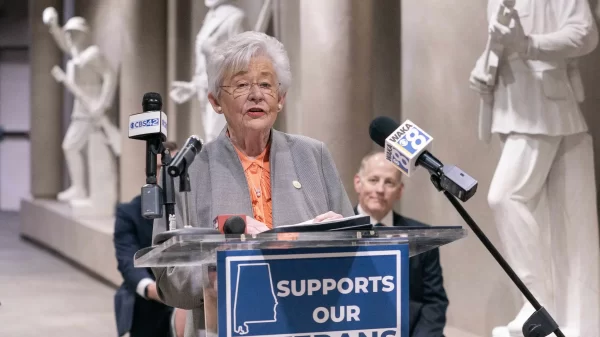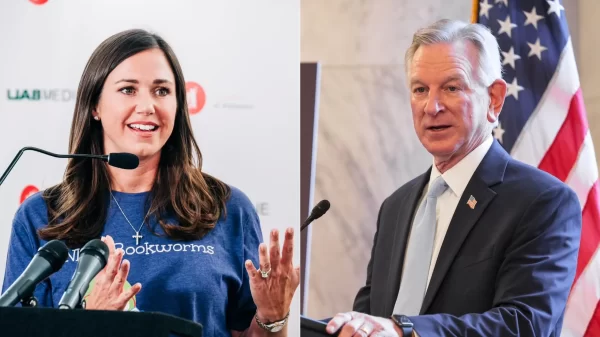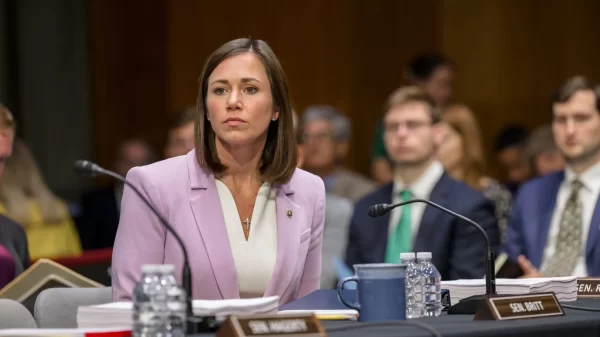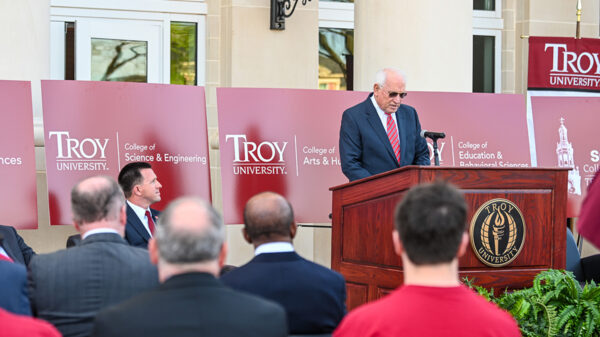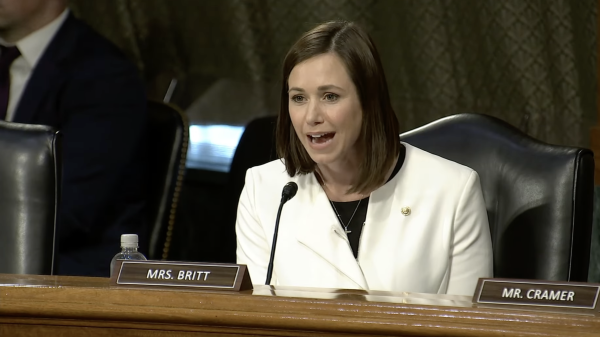|
Getting your Trinity Audio player ready...
|
Recently, U.S. Sens. Katie Britt, R-Ala., and Tim Kaine, D-VA, announced a policy proposal that looks to expand American child care through various tax credits and grant programs. The so-called Britt-Kaine Bipartisan Child Care Plan includes two pieces of legislation, the Child Care Availability and Affordability Act and the Child Care Workforce Act.
“The Child Care Availability and Affordability Act modernizes three existing tax programs to lower costs for parents and businesses looking to provide child care, and the Child Care Workforce Act authorizes a pilot program to boost the supply of child care workers through wage-to-skill matching programs building on successful initiatives states and localities have implemented,” reads the senators’ official press release.
Under the proposal, the Child Care Availability and Affordability Act would increase the size of the Child and Dependent Care Tax Credit and make it refundable, with the intention of increasing child care access for low-income families. The maximum credit would be expanded to $2,500 for families with one child and $4,000 for families with two or more children. The refundable provision would allow families who do not earn enough money to owe federal income taxes to still benefit from the credit.
The act would also increases the amount which a family can deduct from their child care expenses through the Dependent Care Assistance Program. It would also decouple the DCAP from the CDCTC “to allow eligible families to benefit from both when their child care expenses exceed the DCAP threshold. This will have big benefits for middle-income families who currently do not access the CDCTC but have particularly high child care costs,” according to the senators.
The Employer-Provided Child Care Tax Credit, commonly known as 45F, would also be bolstered under the legislation, with the intention of incentivizing more businesses to provide child care coverage for their employees.
“The Kaine-Britt plan would increase the maximum [Employer-Provided Child Care Tax Credit] to $500,000 (up from the current level of $150,000) and the percentage of expenses covered to 50 percent (up from 25 percent). It has a larger incentive for small businesses ($600,000) and allows for joint applications for groups of small businesses who want to pool resources,” the press release explains.
Meanwhile, the Child Care Workforce Act “would establish a competitive grant program for States, localities, Indian Tribes, and Tribal organizations who are interested in adopting or expanding pay supplement programs for child care workers to increase supply and reduce turnover.” The proposed grant program is based on policies which already exist in Virginia, Nebraska, Maine and Washington D.C.
Alabama faces particularly sharp challenges when it comes to child care. Despite having one of the lowest unemployment rates in the country, Alabama also has one of the lowest labor force participation rates, indicating that many Alabamians without jobs are not actively seeking to become employed. The Alabama House Commission on Labor Shortage identified child care needs as a major factor in creating this low labor force participation rate, as many working age Alabamians must abandon potential employment in order to care for their dependents.
The senators’ press release also notes that 60 percent of Alabama residents live in “child care” deserts, with a severe lack of child care providers in both rural and urban areas. The average annual cost for child care in the state was over $7,000 per infant or toddler as of 2022, posing a serious financial burden to even the median married couple in Alabama.
Provider wages also remain low in the state, contributing to the lack of available and affordable care, with the median child care worker in Alabama making less than $23,000 annually.
APR spoke to Lenice Emanuel, the executive director of the Alabama Institute for Social Justice, and Dr. Constance Dial, the owner of Trinity Kids Learning Center in Mobile to better understand how the Britt-Kaine plan could impact the state of child care in Alabama. Both Emanuel and Dial were hesitant to celebrate the legislation as anything more than a small step in the right direction.
“I’m just going to be honest with you,” Emanuel said. “This is a great first step, right, the idea that we have a bipartisan plan for child care, it’s a wonderful thing. But, when you consider how marginalized a lot of the demographics that we advocate for are, I mean, it almost has an elitist frame… tax credits being sort of a solution for the lack of adequate funding in childcare is not really a solution, particularly if you are barely able to put food on the table.”
“The premise of tax credits is that you have to spend the money first and then you’ll get refunded, right? Or you’ll get some kind of credit that will eventually level the playing field, right? It doesn’t though, because if you don’t have the money to spend upfront in order to get reimbursed, or if you’re not in an income range that makes you eligible [then you will not be able to take advantage of the credit],” Emanuel continued. She also noted that it can be extremely confusing for families — especially poorer families who may not come from a background of formal education — to gain a proper understanding of which credits or incentives they may be eligible for and how they can apply.
“Imagine if you, you know, are not poised to be able to process this information and then apply it, not withstanding the fact that you’re not economically viable enough for it to be a meaningful solution for you,” she stated.
Emanuel and Dial also bemoaned the premise of using grants as a means of supporting child care providers, noting that providers are oftentimes required to actually expend resources on training or other hurdles before being eligible to apply for grant monies. Emanuel again emphasized the importance of education, pointing out that child care providers may lack the adequate experience needed to properly apply for grants in the first place.
“Listen, you know, as an executive director and then the CEO of, you know, several nonprofits, I can write a grant with my eyes closed, right? But at the end of the day, you’re talking about, oftentimes, a population that’s been called to do childcare and truly, they’re called to do it, and they’re really good at it. They’re very excellent at it, right? But at the same time, you know, if you ask them necessarily to write a grant application, that may not be an area that they feel confident about exploring or actually have the ability to complete,” Emanuel said.
Both Emanuel and Dial repeatedly expressed their disillusionment with legislators and the absence of input from providers and families when child care legislation is being written.
“Whenever we come up with policy solutions in this state for child care, even when we’ve been at the table as providers and as leaders of these organizations, we’re not heard. They will push through what they consider to be a policy win without actually talking to the people who are actually doing the work to determine if this is a reasonable and viable solution,” Emanuel stated.
“So to push through a… policy win that’s tied to the state’s quality rating system… is in essence saying to these women, ‘we’ll give you two more dollars… but you gotta go through one hundred other hoops,'” she continued. “And in order to go through those hundred other hoops to get to the additional funding, you’ve got to have additional staff, which you can’t afford because you have such high turnover and such high attrition in terms of just trying to maintain the licensure requirements.”
“I think it needed more providers, more of the public coming in, other parents coming in to tell you exactly what they’re experiencing,” Dial added in reference to the Britt-Kaine proposal.
Emanuel went on to explain what she believes would be a better approach to tackling the child care issues seen in Alabama and across the country.
“A more meaningful solution would be, number one, to come up with what the true cost of child care is and work in tandem with providers to come up with direct funding, not funding that they’ve got to do additional work to acquire, but direct funding from the state that will allow them to stabilize their operations and then go from there,” Emanuel said. “These women are oftentimes not only not getting paid but they’re taking out personal business loans in order to be able to run their businesses, they are oftentimes trying to do fundraisers, and, for those that can implement grant processes, are trying to get additional grants.”
“It’s a lot, and all these folks are trying to do is care for children,” she added. “And, to be very clear, child care is the workforce behind the workforce… It is critical infrastructure that allows Alabama to work, and that is an immutable fact.”








